#vancouver street railways
Explore tagged Tumblr posts
Text

VIA Rail Station
#railway station#pacific central#vancouver#station street#local#photographers on tumblr#original phography
95 notes
·
View notes
Text


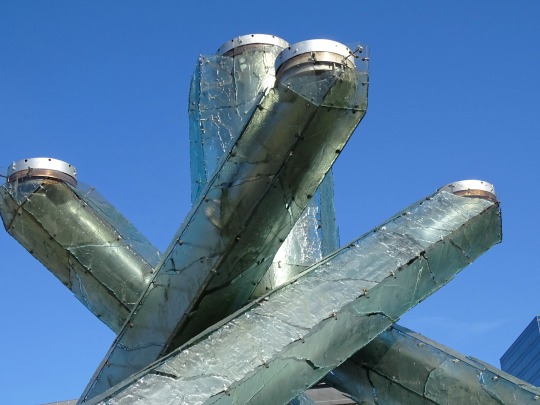
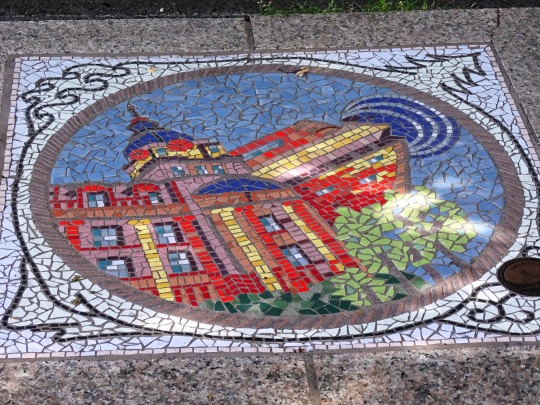


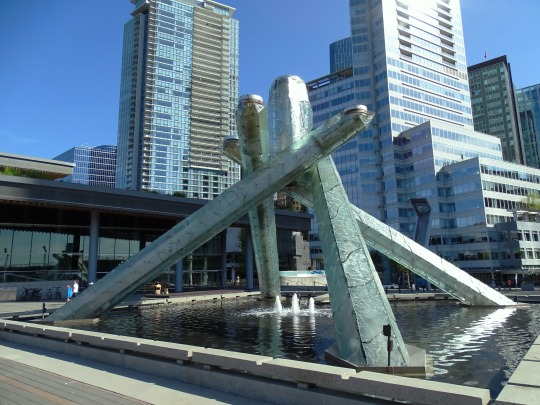


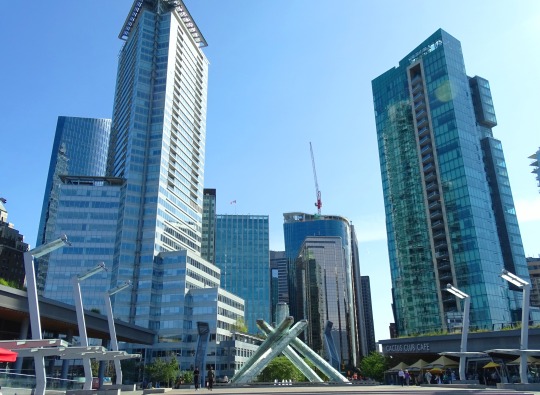
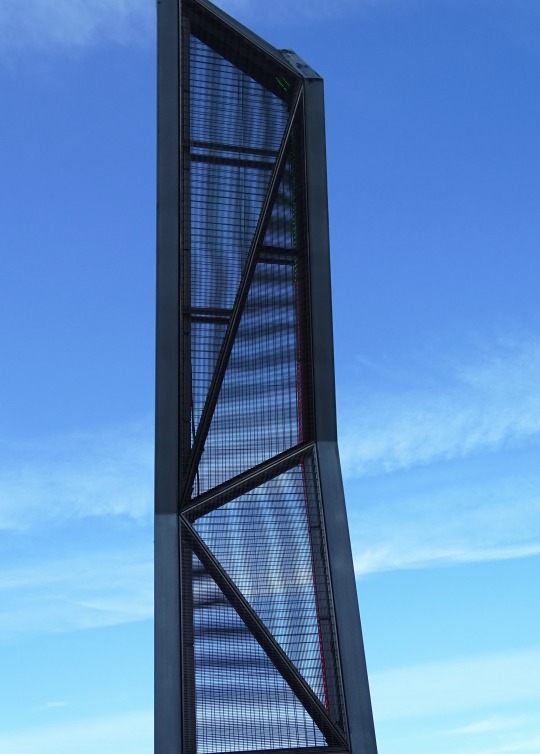

Public Art, Vancouver (No. 2)
The Angel of Victory (French: L'Ange de la Victoire) is a statue crafted by London-born sculptor Coeur de Lion McCarthy (1881–1979), installed in Montreal's Windsor Station, in Quebec, Canada.
It was commissioned in 1922 in memory of the 1,116 Canadian Pacific Railway (CPR) employees who died in World War I. Copies of the statue were also installed at CPR stations in Vancouver and Winnipeg, Canada. The Winnipeg copy has since been moved from the station, and is now located outside the Deer Lodge Hospital.
The bronze, seven foot tall statue shows a fallen soldier being carried up to heaven by a female angel. It is on a pedestal inscribed:
To Commemorate Those in the Service of the Canadian Pacific Railway Company Who at the Call of King and Country, Left All That Was Dear to Them, Endured Hardship, Faced Danger and Finally Passed Out of Sight of Men by the Path of Duty and Self Sacrifice, Giving Up Their Own Lives That Others May Live in Freedom. Let Those Who Come After See to It That Their Names Are Not Forgotten. / 1914–1918
After World War II, the years 1939–1945 were added to the inscription.
The Vancouver copy of the statue was used in a piece by Canadian street artist Richard Hambleton, who had instructed that it be released only after his death, in 2017. Created in 1974, the piece depicts the young artist in place of the fallen soldier, his body pierced by paintbrushes.
Source: Wikipedia
#The Pod by Rick Switzer#downtown#Vancouver#BC#British Columbia#travel#original photography#vacation#tourist attraction#landmark#architecture#cityscape#sculpture#public art#Canada#summer 2023#mosaic#Angel of Victory by Coeur de Lion McCarthy#Jack Poole Plaza#Olympic Cauldron
5 notes
·
View notes
Text
Monday 26th June 2023
After a fond farewell to Days Inn by Wyndham, Vancouver we picked up our Toyota from the airport and set off for Hope BC. The reason for booking this place seems a little lost, but we assumed that it was that we needed a break in what would otherwise have been a very long journey to Naramata tomorrow. Whatever it was, it would appear to be a commonly held view because it appears that the place is mainly geared up as a place to pause to eat and sleep on route to other places all points Rockies. Hope, population 6,181 was first noted when some two third of the native inhabitants were wiped out by smallpox in 1782 after a community having existed here for 10,000 years. Next Simon Fraser arrives in 1808 giving his name to the river, Hudson Trading Company opens in 1848 before being engulfed by the golf rush in 1858. Hope along with the rest of BC became part of Canada in 1871 and in 1886 acquired a station stop on the Canadian Pacific Mainline Railway. The 512km Kettle Valley Railway was built in 1916 to service the copper and silver mining industries and passed through Hope but was closed in 1961 and the track bed now used for recreational pursuits. Skip forward a couple of decades and Rambo First Blood was made here in 1982. However, the Hope we have today is a town set in glorious mountain countryside on a fast flowing salmon spawning river with the beautiful Kawkawa Lake nearby. It doesn't deserve to be just a stopover town because it has fantastic virtues of it own for many outdoor activities. We are staying at the Hope Springs Eternal B&B. A well used phrase from Ecclesiastes, later a poem by Alexander Pope, a film in 2018 and now a B&B. Jolly good. Well it's a great place to stop, although how the postman finds number 65882 in a street completely defeats me! We are told bears visit the very pleasant garden in the morning from the woods beyond. Hmm that old one. The area sits in a bowl created by surrounding mountains making the weather a little volatile. The sky was blue and the sun shone this afternoon, then within a very short space of time the clouds gathered and we had an enormous thunder storm accompanied by torrential rain. Then it all cleared up and we went for a walk along the disused railway track.
Tomorrow we move ever onwards deeper into the Rockies, climbing ever higher. Next stop is for 3 nights giving us more time to explore the area.
ps Some local controversy in these parts due to a federal project forcing an oil pipeline to be cut through forest from Alberta. Feelings are that locals get the construction noise, dirt and grief and Alberta sells its oil and gets rich. All this and accusations that Alberta would like to be part of the USA!
pps A sign in McDonald's says No Soliciting. What kind of town is this?

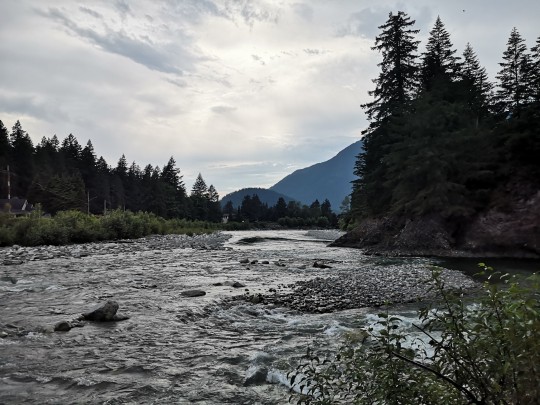

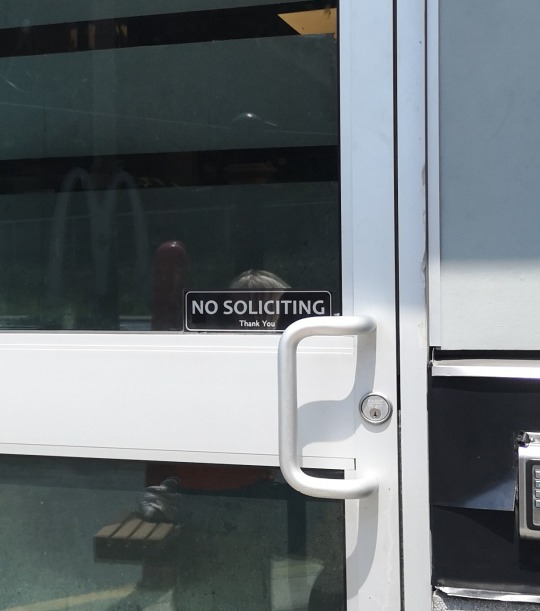
3 notes
·
View notes
Text
The sound of a tooting streetcar can be a familiar—and sometimes jarring— sound of the urban landscape. But why are many streetcars today so dry for toots?
The answer dates back to the origins of streetcar systems more than a century ago. Back then, the Detroit Street Railway Company started using the metal "tooters" that we know today to both signal the operators to begin and alert pedestrians to their approach.
But as time went on and new regulations were put in place, the need for tooting streetcars abated, and technological advances allowed for quieter braking systems. Since the 1980s, a number of large transit systems, including those in cities such as Detroit, Toronto, and Vancouver, have adopted quieter brakes and gutted or silenced the trolley's tooters— in part to improve passenger comfort and reduce noise for city residents.
Now, some cities are finding creative solutions to the problem. In Toronto, beginning in 2006, the Public Works and Infrastructure Committee championed the idea of bringing back the sound of streetcar toots. The idea: Using compressed air, the system would record a human-voiced "toot" and feed it over the TTC's public address system when the streetcars approached stops.
Today, those who remember the sound of an old-fashioned tooter may be reminded of happier times, but for many commuters, quieter streetcar bells and horns are now just part of the transit experience.
0 notes
Text

"'Long Live May 1,' Communists Cry," Vancouver News Herald. May 2, 1934. Page 1. --- Red-neck-tied Crowd at Arena Condemn Capitalism ---- "Long live the First of May! Long live the international working class: Down with Capitalism, down with Fascism! Up with the proletariat and long live the Soviet Union!
These opening remarks by the first speaker at a mass gathering of May Day celebrants in the Arena on Tuesday night formed the sub- stance of a number of addresses given by men, women and children and heard by some 2,500 red-necktled, red-sweatered Communist enthusiasts.
The stirring calls to arms of the speakers were interspersed by musical selections played by the fife band of the Young Pioneers of North Burnaby, and the Jugoslav Orchestra. The orchestra opened the evenng with an excellent rendering of "The Internationale" and the fife band closed it with the playing of "The Red Flag." Such fitting tunes as "Free Russia" and "The Russian Revolution" were played in between times.
The hit of the evening was a splendid recital by Elspeth Munroe. aged about 8, who staggered her audience with:
"Comrade chairman and comrades, ours is a struggle against hunger, wage cuts, Fascism and war. I am proud to be a worker's child. I urge you to support the Young Pioneers, and not the Girl Guides and Boy Scouts organizations which only teach the arts of wa r- and we don't want war!
"We must demonstrate against the Special Powers Act for it is legislation such as that which breeds Fascism and Fascism means a reign of terror for the working classes. It is not only on May Day but all through the year that we must fight."
She concluded with a stirring "poem" dealing with war and Fascism.
Another speaker, introduced by Chairman Joseph Foley as "Comrade Stewart of the B. C. Electric." expressed much regret at the fact that his fellow street railway work- ers were not demonstrating on the streets in honor of May Day.
"I feel sure, however," he added, "that we will all be on the streets where we belong, next May Day."
After the audience had heard much about the logging strike, Youth's point of view, and the advance of Soviet Russia, there was a pause while some of the comrades on the platform made an appeal for funds to aid the loggers. On an appeal being made, one member of the audience produced a ten dollar bill, three five dollar bills followed this, and then a number of ones were produced. A well-known news- paper man, sitting at the press table became the butt of a number of "Jests" at this point and finally he too, was induced to part with the small amount of change he had in his pockets.
Following this interlude, which was enhanced by more music, the meeting again settled down to listen to a series of speakers. One speaker told much about the anti-war solidarity in the "slave camps" he was a delegate from the Relief Camp Workers' Union-another told about troubles of the longshoremen; Comrade George Drayton gave a masterly speech on the world economic situation and its relation to Communism; the woman's angle was heard from, there were a few announcements, and then everybody went home.
#may day#may day rally#vancouver#mass meeting#workers' unity league#communists#canadian socialism#labour socialism#antifascism#anti-capitalism#great depression in canada#relief camp workers' union#young communists#relief camps#working class struggle
0 notes
Text
Events 8.2 (before 1930)
338 BC – A Macedonian army led by Philip II defeated the combined forces of Athens and Thebes in the Battle of Chaeronea, securing Macedonian hegemony in Greece and the Aegean. 216 BC – The Carthaginian army led by Hannibal defeats a numerically superior Roman army at the Battle of Cannae. 49 BC – Caesar, who marched to Spain earlier in the year, leaving Marcus Antonius in charge of Italy, defeats Pompey's general Afranius and Petreius in Ilerda (Lerida) north of the Ebro river. 461 – Majorian is arrested near Tortona (northern Italy) and deposed by the Suebian general Ricimer as puppet emperor. 932 – After a two-year siege, the city of Toledo, in Spain, surrenders to the forces of the Caliph of Córdoba Abd al-Rahman III, assuming an important victory in his campaign to subjugate the Central March. 1274 – Edward I of England returns from the Ninth Crusade and is crowned King seventeen days later. 1343 – After the execution of her husband, Jeanne de Clisson sells her estates and raises a force of men with which to attack French shipping and ports. 1377 – Russian troops are defeated by forces of the Blue Horde Khan Arapsha in the Battle on Pyana River. 1415 – Thomas Grey is executed for participating in the Southampton Plot. 1492 – The Jews are expelled from Spain: 40,000–200,000 leave. Sultan Bayezid II of the Ottoman Empire, learning of this, dispatches the Ottoman Navy to bring the Jews safely to Ottoman lands, mainly to the cities of Thessaloniki (in modern-day Greece) and İzmir (in modern-day Turkey). 1610 – During Henry Hudson's search for the Northwest Passage, he sails into what is now known as Hudson Bay. 1776 – The signing of the United States Declaration of Independence took place. 1790 – The first United States Census is conducted. 1798 – French Revolutionary Wars: The Battle of the Nile concludes in a British victory. 1830 – Charles X of France abdicates the throne in favor of his grandson Henri. 1858 – The Government of India Act 1858 replaces Company rule in India with that of the British Raj. 1869 – Japan's Edo society class system is abolished as part of the Meiji Restoration reforms. 1870 – Tower Subway, the world's first underground tube railway, opens in London, England, United Kingdom. 1873 – The Clay Street Hill Railroad begins operating the first cable car in San Francisco's famous cable car system. 1897 – Anglo-Afghan War: The Siege of Malakand ends when a relief column is able to reach the British garrison in the Malakand states. 1903 – The Ilinden–Preobrazhenie Uprising against the Ottoman Empire begins. 1914 – The German occupation of Luxembourg during World War I begins. 1916 – World War I: Austrian sabotage causes the sinking of the Italian battleship Leonardo da Vinci in Taranto. 1918 – The first general strike in Canadian history takes place in Vancouver. 1922 – A typhoon hits Shantou, Republic of China, killing more than 50,000 people. 1923 – Vice President Calvin Coolidge becomes U.S. President upon the death of President Warren G. Harding.
0 notes
Text
Episode 188 - Transportation and Transit Non-Fiction
All aboard! This episode we’re discussing the non-fiction genre of Transportation and Transit! We talk trains, buses, bicycles, spaceships, and more!
You can download the podcast directly, find it on Libsyn, or get it through Apple Podcasts or your favourite podcast delivery system.
In this episode
Anna Ferri | Meghan Whyte | Matthew Murray | Jam Edwards
Things We Read (or tried to…)
The Art of the Locomotive by Ken Boyd
Iron Empires: Robber Barons, Railroads, and the Making of Modern America by Michael Hiltzik
Ghost Train (four part podcast by Denver Public Radio)
Transit Maps of the World: The World's First Collection of Every Urban Train Map on Earth by Mark Ovenden
Transit Maps of the World: Expanded and Updated Edition of the World's First Collection of Every Urban Train Map on Earth by Mark Ovenden
Confessions of a Recovering Engineer: Transportation for a Strong Town by Charles L. Marohn Jr.
Canadarm and Collaboration: How Canada’s Astronauts and Space Robots Explore New Worlds by Elizabeth Howell
Links between two cities: historic bridges between Ottawa and Hull by Lucien Brault.
Other Media We Mentioned
The Platform Edge: Uncanny Tales of the Railways by Mike Ashley
Murder on the Orient Express by Agatha Christie
Orient Express by Graham Greene
Maiden Railways by Asumiko Nakamura
Heaven's Design Team, Vol. 1 by Hebi-Zou, Tsuta Suzuki, and Tarako
For 2 Weeks, Switzerland Has A Rail Replacement Helicopter
Vancouver's Expo Line 1990 vs 2020
Mini Metro
Soviet Bus Stops by Christopher Herwig
There’s a documentary movie!
Soviet Metro Stations by Christopher Herwig
How To F#€k Up An Airport (five part podcast by Radio Spaetkauf)
Some YouTube channels and videos about trains and transport things:
CityNerd
Not Just Bikes
Stroads are Ugly, Expensive, and Dangerous (and they're everywhere)
Crossing the Street Shouldn't Be Deadly (but it is) (See the building Anna and Matthew used to live in!)
RMTransit
The Tim Traveller
This New LA Metro Station Should be PACKED - Here’s Why It’s Not
Denver’s Transit System is Problematic
Freight Trains: Last Week Tonight with John Oliver (HBO)
A Supposedly Fun Thing I'll Never Do Again: Essays and Arguments by David Foster Wallace
Links, Articles, and Things
Note to self: Make “derail” joke about conversation going off topic.
Train_Station-Katowice_Poland.wav by jgrzinich
Rail replacement bus service (Wikipedia)
Slow television (Wikipedia)
“It was popularised in the 2000s by the Norwegian Broadcasting Corporation (NRK), beginning with the broadcast of a 7-hour train journey in 2009.”
Fort Collins Trolley
‘I am done’: Amid rider woes, is Ottawa’s transit system a victim of its own success?
Heritage Minutes: Avro Arrow
12 Transit/Automotive/Planes/Trains/Boats books by BIPOC Authors
Every month Book Club for Masochists: A Readers’ Advisory Podcasts chooses a genre at random and we read and discuss books from that genre. We also put together book lists for each episode/genre that feature works by BIPOC (Black, Indigenous, & People of Colour) authors. All of the lists can be found here.
Traveling Black: A Story of Race and Resistance by Mia Bay
Driving the Green Book: A Road Trip Through the Living History of Black Resistance by Alvin Hall
Empire's Tracks: Indigenous Nations, Chinese Workers, and the Transcontinental Railroad by Manu Karuka
Bicycle/Race: Transportation, Culture, & Resistance by Adonia E. Lugo
Making a Chaputs: The Teachings and Responsibilities of a Canoe Maker by Joe Martin with Alan Hoover
Taxi!: Cabs and Capitalism in New York City by Biju Mathew
Crash Course: If You Want To Get Away With Murder Buy a Car by Woodrow Phoenix
Colored Travelers: Mobility and the Fight for Citizenship Before the Civil War by Elizabeth Stordeur Pryor
Why Flying Is Miserable: And How to Fix It by Ganesh Sitaraman
Driving While Black: African American Travel and the Road to Civil Rights by Gretchen Sorin
Overground Railroad: The Green Book and the Roots of Black Travel in America by Candacy A. Taylor
The Diary of Dukesang Wong: A Voice from Gold Mountain by Dukesang Wong, translated by Wanda Joy Hoe
Give us feedback!
Fill out the form to ask for a recommendation or suggest a genre or title for us to read!
Check out our Tumblr, follow us on Instagram, join our Facebook Group, or send us an email!
Join us again on Tuesday, February 6th just in time for Valentine's day we’ll be discussing the genre of Humorous/Funny Romance!
Then on Tuesday, February 20th we’ll be talking about our reading resolutions for 2024! (2024? That can’t be right. That’s definitely the future.)
1 note
·
View note
Text
Unforgettable Foreign Tour Packages: That You'll Never Want to End
Introduction:
Many individuals want to visit far-off places, interact with various cultures, and create amazing memories. Choose from one of the greatest foreign tour packages that include nations and cultures if you're ready to go on an adventurous adventure. Our travel packages provide you the chance to experience the beauty of the entire world, from the modern sceneries of Singapore to the rich splendor of Abu Dhabi, the charming history of Russia, the natural landscapes of Canada, and the beautiful tropical paradise of Bali.
Singapore Iconic:
Explore the city-state that combines heritage and modernity in perfect harmony. With our Singapore tour package, you may see landmarks like Sentosa Island, the Gardens by the Bay, and Marina Bay Sands. Enjoy the delicious street food, go on an adventure at Universal Studios, and shop until you drop on Orchard Road. Make lifelong experiences by engaging yourself in Singapore's colorful areas and rich multicultural fabric.
Abu Dhabi Elegance:
Enjoy Abu Dhabi's beauty and development. Visitors are invited to awe at architectural marvels like the Sheikh Zayed Grand Mosque and the Louvre Abu Dhabi as part of our tour package. Discover the excitement of desert safaris, stroll along the waterfront along the Corniche, and explore the crowded markets. You will be delighted by Abu Dhabi's magnificent fusion of wealth, culture, and Arabian hospitality.
Russian Enigma:
With our Russia tour package, you may step into the pages of history. Russia offers its mysteries, from the beauty of the Kremlin and Red Square in Moscow to the rich tapestry of the Hermitage Museum in St. Petersburg. Explore the famous Trans-Siberian Railway, let the attraction of the Golden Ring cities attract you in, and take in the creative legacy that has affected years.
Canadian Wonderland:
With our Canada tour package, you can enjoy the country's magnificent landscapes. Canada's natural magnificence beckons, from the soaring peaks of the Rocky Mountains to the tranquil serenity of Banff and Jasper National Parks. Discover thriving cities like Vancouver and Toronto, marvel at the spectacular Niagara Falls, and go on outdoor activities in the wilderness. You'll be in awe of Canada's charm at every step.
Bali Bliss:
With a Bali tour package, go to Bali's tropical paradise. Explore historic temples hidden away in verdant environment, enjoy up the sun on lovely beaches, and take in incredible sunsets. Learn about the distinctive Balinese culture, delight in relaxing spa services, and enjoy in mouthwatering local food. Bali provides the ideal fusion of relaxation, adventure, and culture.
Conclusion:
There are experiences waiting to be explored in every location. You have the opportunity to experience the world's valuables in comfort and luxury because to our meticulously planned foreign tour packages. Our trips satisfy every traveler's needs, whether they are for luxury, adventure, or a cultural experience. Our international travel packages are your ticket to a magical world if you're prepared for exploring your horizons and make memories that outstrip national boundaries.
0 notes
Text
British Columbia Chamber Of Commerce
few individuals reside north of Prince George and Prince Rupert. British Columbia’s reliance on hydroelectricity stems from its steep and rugged landforms and ample precipitation, which together produce monumental seasonal runoffs in quite a few rivers and huge quantities of potential hydroelectric energy. Hydroelectric energy princeton was first produced on the shut of the nineteenth century from small rivers in the southwest for city customers in Victoria and Vancouver. The largest single energy site in the southwest of the province previous to 1940 was developed on Bridge River, just east
The remaining population is dispersed across the southern half of the province, mainly occupying the north-south valleys or resource-based settlements alongside the principle transportation lines. The only main farming populations live in the villager motel Okanagan Valley and dispersed alongside the freeway between Kamloops and Prince George. These linear population clusters are separated from one another by unoccupied mountain ranges. With the exception of an city and agricultural cluster within the Peace River area of the northeast,
campaigns. Through the Forest Reserve Act (1994) the provincial authorities is making an attempt to prevent comparable future confrontations by securing a industrial forest land base. In 2007 the government announced the Coastal Forest Action Plan, geared bronze sculpture canada toward enhancing the sector’s competitiveness and encouraging a shift to harvesting second-growth trees. In the 19th century BC’s pure sources supplied markets elsewhere in Anglo-America or in East Asia, or Europe.
Employees are provided aggressive compensation and benefits; ongoing learning and growth; an environment that helps health and wellness. BCI seeks funding opportunities around the world and throughout a spread of asset courses that convert savings into productive capital. Our funding returns play a big function in helping our institutional shoppers build a financially secure future for their british columbia beneficiaries. The BC Chamber of Commerce is the largest business association in British Columbia, representing 100 chambers of commerce and boards of commerce, and 36,000 companies of each size, and from each sector and region of the province. Funds generated by lottery, casinos, and sports activities betting go back to the Province to help support healthcare, schooling, and neighborhood programs all across B.C.
permanent European settlement came with the development of the fur commerce within the early nineteenth century. A flurry of exercise adopted the discovery of gold on the lower kamloops british columbia and center Fraser River (see Fraser River Gold Rush), leading to an inland system of supply and transportation along the Fraser River to the Cariboo Mountains.
Other steel mines across the Interior Plateau from close to Williams Lake to Babine Lake within the northwest have produced intermittently. Interior logs and completed forest products are all moved by street or rail and therefore all forestry-based settlements are positioned on the primary railways or highways. Unlike eastern mills, the pulp and paper mills of BC grew to become integrated into current sawmill operations and acquired a lot of their wooden fibre raw materials from product residue, such as sawdust and chips from adjoining lumber mills. The slender benches and terraces above Lake Okanagan are one of Canada's three major fruit-growing regions and an essential grape-growing area.
British Columbia’s historic websites include Fort Langley, the first fur-trading publish within the Lower Fraser Valley, Barkerville, and Fort Steele. The provincial authorities also has quite a few historical indicators at scenic pull-off sites along all main kamloops highways. The BC authorities gives monetary assistance to arts and cultural activity through the British Columbia Arts Council, an arms-length group created in 1995. After the 2010 Olympic and Paralympic Games in Vancouver the provincial government also
century, BC is one of Canada's most affluent and fastest-growing provinces. The earlier a part of the province's historical past was marred byracism, particularly the anti-Asiatic riots of 1907 and theKomagata Maruincident of 1914. Stirred up by politicians of all events, fears have been rampant that British Columbia's future as a "white province" was threatened. Kamloops is a metropolis princeton museum of round 90,000 folks situated within the central Interior, round 350 km northeast of Vancouver. The properties on evacuation order or alert because of the Ross Moore Lake fire are in a rural area south of Kamloops.
of the Coast Mountains. The southwestern energy sources have been sufficient for industrial and residential markets within the Georgia Strait area till the Sixties. The main enlargement of the forest industry came, nevertheless, after the First World War when the Panama Canal opened and gave access to markets around the north Atlantic area wolf sculptures. Since entry to capital and pure sources for export was extra necessary than ownership of farmland, BC attracted a special kind of settler from those that settled on the land on the Prairies and across japanese Canada. Europeans arrived on the northwest coast a lot later than they did other areas of the continent.
0 notes
Photo
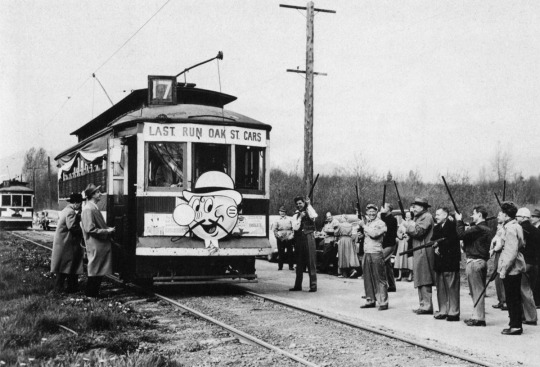

Henry Ewert’s definitive account of the rise and fall of streetcars in Vancouver and Victoria, The Story of the B.C. Electric Railway Company, contains everything you need to know about urban rail mania in these parts up to 1986 – EXCEPT why these gun-toting yahoos greeted the last run of the Oak Street tram in 1952.
Answer: Oak and 44th was home to the Vancouver Gun Club. The Vancouver Archives’ pic shows the trapshooters in action circa 1919.
#Henry Ewert#The Story of the B.C. Electric Railway Company#Oak Street#streetcar#tram#1952#Vancouver Gun Club#trapshooters#1919
0 notes
Photo

You Me Her #307 “Hold Onto Your Ovaries”
The throuple plans for the future after deciding to get back together and Nina goes on a date with Shaun.

Emma convinces Izzy to reconcile in the Amari bathroom at 9002 Nash Street and later Carmen gets good news about the magazine.

Nina and Shaun begin their date with a movie at the Paramount Gentlemen’s Club in New Westminster.

They continue by walking through the nearby Downtown Parkade.


And then they head down to Westminster Pier Park where they drink, play basketball, and talk about their hopes & dreams.

Ben talks to Izzy on the phone while at Railway Street & Dunlevy Avenue.

Dave and Jack play basketball outside the Amari house at 9010 Nash Street and Dave gives Jack an awkward hug.
I still need to identify Directions Youth Services.
#you me her#3x07#9002 nash street#paramount gentlemen's club#downtown parkade#westminster pier park#9010 nash street#railway street#tv locations#vancouver#new westminster#fort langley
1 note
·
View note
Note
have u ever actually been to a museum or do you just not know how to read
i bet this is my hot take that diaries and scrapbooks of everyday people give more insight on history and should be cherished, so i guess you just misunderstood me, so do you know how to read?
you want me to list the museums i've been to? most museums have more interest in everyday items used by people and yeah like go look at the rich person's hat but like there will be an entire room on how seamstresses used to make clothes and that is way more interesting. so if this is this a quiz? wanna compare top museums, i have been to these and more
museum of modern art
metropolitan museum of art
guggenheim museum
american museum of natural history
brooklyn museum
9/11 memorial & museum
new museum
intrepid sea, air & space museum
hayden planetarium
ellis island national museum of immigration
south street seaport museum
california academy of sciences
san francisco railway museum
san francisco botanical garden
musée mécanique
canadian museum of nature
canadian war museum
canada science and technology museum
canada aviation and space museum
canadian museum of history
national gallery of canada
canada agriculture and food museum
bank of canada museum
ottawa art gallery
canadian children's museum
london children's museum
the royal canadian regiment museum
fanshawe pioneer village
jet aircraft museum
royal ontario museum
art gallery of ontario
gardiner museum
textile museum of canada
casa loma
hockey hall of fame
ontario science centre
musee de beaux arts
mccord
stewart museum
musee d'art contemporain
pointe-à-callière, museum of archaeology and history
biodome
montreal science center
canadian center for architecture
redpath museum
musée de l'holocauste montréal
montreal insectarium
space for life museum
museum of anthropology at ubc
vancouver art gallery
science world
britannia mine museum
british museum
natural history museum
national portrait gallery
charles dickens museum
tate
johnson space center
louvre
musée d'orsay
musée rodin
musée d'art moderne de paris
musée de l'orangerie
petit palais
grand palais
les invalides
alberta aviation museum
royal alberta museum
more and more smaller museums, aquariums, zoos, old castles, memorials, historic buildings and niche interests
35 notes
·
View notes
Text
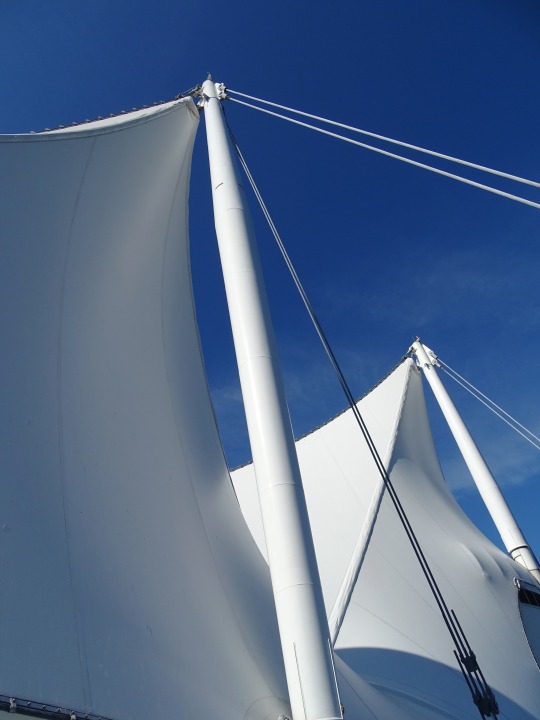
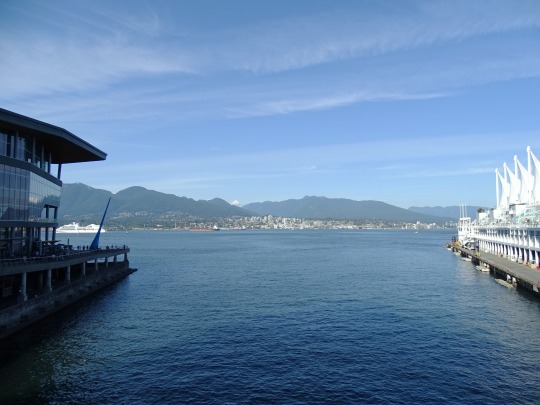

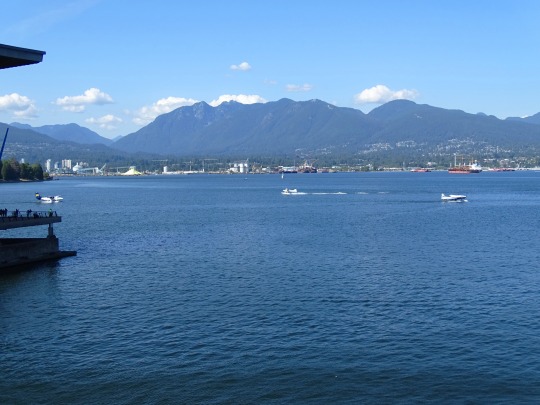

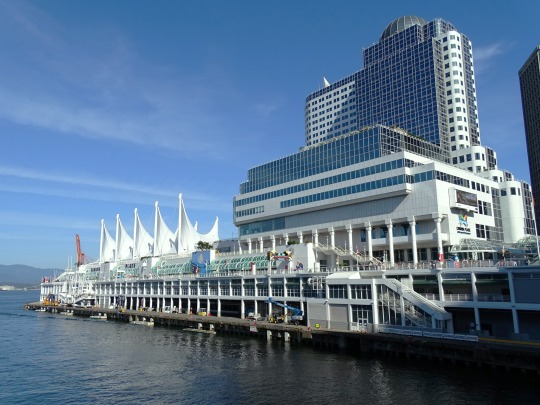
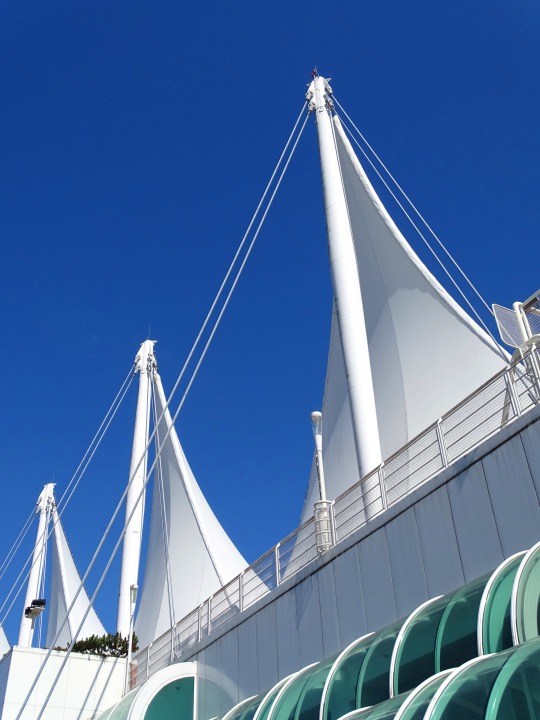
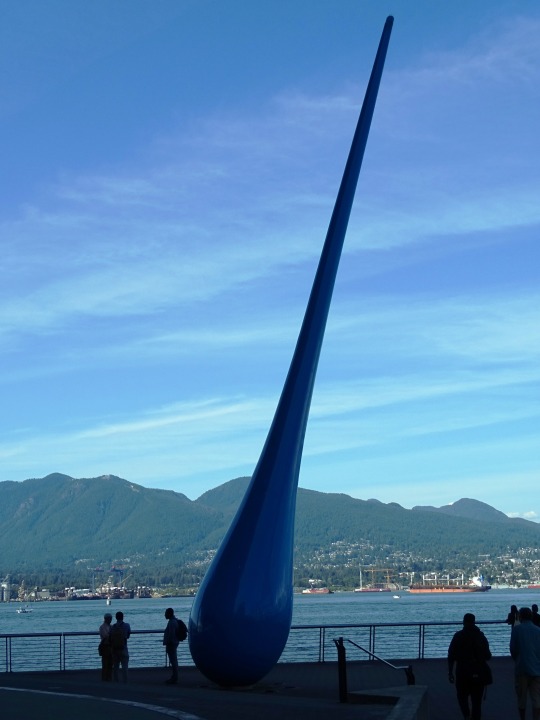
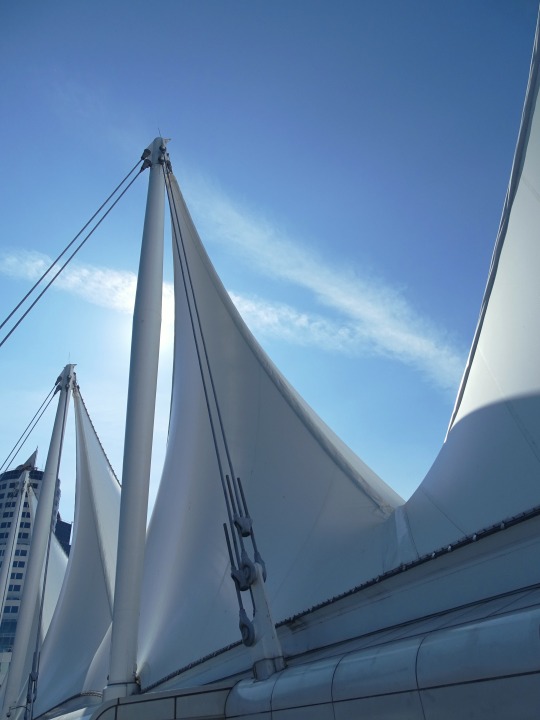
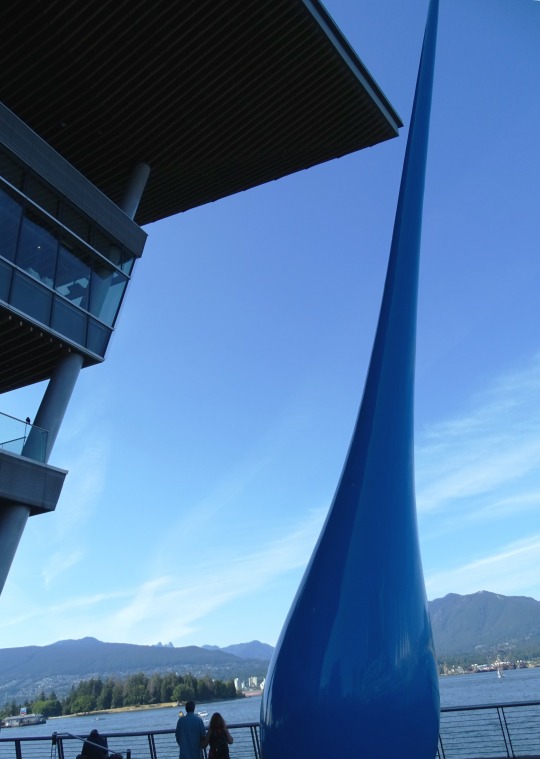

Canada Place, Vancouver
Canada Place is a building situated on the Burrard Inlet in Vancouver, British Columbia, Canada. It is home to the Vancouver Convention Centre, the Pan Pacific Vancouver Hotel, the Vancouver World Trade Centre, and the virtual flight ride FlyOver Canada. The building's exterior is covered by fabric roofs resembling sails. It is also the main cruise ship passenger terminal for the region, where cruises to Alaska originate. The building was designed by architects Zeidler Roberts Partnership in joint venture with Musson Cattell Mackey Partnership and DA Architects + Planners.
Canada Place is accessed via West Cordova Street and near Waterfront Station, a major transit hub with SkyTrain, SeaBus, and West Coast Express connections.
The structure was expanded in 2001 to accommodate another cruise ship berth. During the 2010 Winter Olympics, Canada Place served as the Main Press Centre.
Canada Place was built on the land which was originally the Canadian Pacific Railway's Pier B–C. Built in 1927, its primary purpose was to serve CPR and other shipping lines trading across the Pacific Ocean.
In 1978 Federal, Provincial and Municipal governments commenced planning for development of convention, cruise ship and hotel facilities. Four years later, the Government of Canada created a crown corporation, the Canada Harbour Place Corporation (known as Canada Place Corporation until 2012), to develop the Canada Place project on the Pier B–C site. Construction began when Queen Elizabeth II arrived on the Royal Yacht Britannia with Pierre Trudeau, Prime Minister of Canada and William R. Bennett, Premier of BC to initiate the first concrete pour.
During Expo 86, the Canada Pavilion at Canada Place was opened by Prince Charles and Brian Mulroney, Prime Minister of Canada. Among the largest and most elaborate pavilions presented by any nation at any World's Fair, the Canada Pavilion hosted more than 5 million visitors prior to the October 13, 1986 closing date.
Canada Place Corporation (CPC), a Crown agent, continues to act as the coordinating landlord for Canada Place facilities.
Source: Wikipedia
#Vancouver Convention Centre#fabric roofs#Zeidler Roberts Partnership#Musson Cattell Mackey Partnership#downtown#Vancouver#BC#British Columbia#travel#original photography#vacation#tourist attraction#landmark#architecture#cityscape#sculpture#public art#Canada#summer 2023#Pacific Ocean#flora#The Drop by Inges Idee#Burrard Inlet#Jack Poole Plaza#Olympic Cauldron
3 notes
·
View notes
Text
11 Best Places to Visit in #Mumbai
Mumbai, the city of dreams is one of the most popular cities of India. It not only acts as the main economic hub but also the entertainment capital of India. Often called the Shanghai of India, Mumbai is known for its vibrant nightlife and bustling city life. Booking cheap flights from Vancouver to Mumbai would allow you to cherish the sublime beauty of this city. As the city has umpteen tourist sites, you need to plan your trip in advance if you don’t want to miss out on anything!

Let us take a look at some of the best places to visit in Mumbai:
1. Witness the Old World Charm in Chhatrapati Shivaji Terminus
Strolling through Old Mumbai or South Bombay will take you back in time as you will find some buildings built in beautiful architectural designs. You will find a perfect blend of Gothic and contemporary architectural styles. You will witness greater British influence on the colonial-era buildings. Chhatrapati Shivaji Terminus is an epitome of the colonial-era buildings. This is one of the UNESCO World Heritage sites in India. This is a classical architecture marvel of British era. This 135 year old structure is pride of Indian Railway terminus. It is one of the busiest railway terminus in India.
2. Explore the Gateway of India
An iconic landmark in Mumbai, the Gateway of India was built during the 20th century. It was built to commemorate the arrival of King George V and Queen Mary. Ironically, this was the place chosen by the British to give the final farewell to India. Your trip to Mumbai is incomplete without exploring the Gateway of India. The Taj Mahal Hotel is located completely opposite the Gateway of India.
3. Stroll Through the Marine Drive
You haven’t explored Mumbai unless you visit the Marine Drive. Marine Drive and Chowpatty are old landmarks of Mumbai, and quite popular among tourists. The night is the perfect time to stroll through the Marine Drive as the street lights and lamps surrounding the promenade act like a Queen’s necklace. This scenic sight of the enlightened Marine Drive is a sight to behold. You can even try delectable street food from Mumbai at the Marine Drive. The Pearl of the Orient, a revolving restaurant at the top of Ambassador Hotel near Churchgate station, off Marine Drive, provides for a breathtaking view of Mumbai’s skyline. With The Gateway of India and Mumbai Stock Exchange Tower on one side it revolves to let us see the skyline of Nariman Point and Cuffe Parade in the distant, and Braborne Stadium on the South side.
4. Enjoy a Day Trip to Elephanta Caves
Elephanta Caves is a set of caves carved out of basalt rock at the Elephanta Island. You can take a ferry ride from Gateway of India and reach the Elephanta Caves. During the ride, you can even enjoy the scenic views of the Mumbai coastline. The caves will provide a glimpse of the rich historical past of the city.
5. Enliven your Taste Buds around Aksa Beach
If you want to satiate the foodie in you, Mumbai is the place to visit. From street food to fine dining options, you will find everything here. However, the highlight of the city is the street food such as Pav Bhajji, Sevv Puri, Vada Pav, Bhel Puri, Pani Puri, and a lot more. You can also try the authentic Iranian cuisine at the Parsi Café. Leopold Café is one of the most popular cafes in Mumbai that you should definitely visit. If you want to try your hands at the Mughlai cuisines, Punjab Grill is the place to visit.
6. Take a Bollywood Tour from Carter Road Promenade
The City of Dreams is known for its glitz and glamour and of course Bollywood. Without taking the Bollywood tour, can your trip be complete? Locals can take you to the stops outside the houses of famous celebrities including Jalsa, Mannat, and a lot more. In case you are lucky, you might get a chance to meet the famous Bollywood stars!
7. Pay a visit to Haji Ali Dargah
Haji Ali Dargah is a popular place in Mumbai that attracts tourists from all walks of life. This structure was built in the 15th century on a small island. Taking a glimpse of the city from the shrine is truly an experience that you can cherish for your lifetime. Your trip to Haji Ali Dargah can become all the more memorable if you happen to meet the Qawwali singers. The 500 year old Dargah is a blend of Indo-Islamic architecture. The Dargah has been listed in the World Book of Records as one of the most visited shrines. One of the most surprising facts is that the path that connects the island to the mainland gets submerged during the high tide. Thus, it can be reached only during the low tide.
8. Roam around Sanjay Gandhi National Park
This isn’t just another national park. This is situation right in the middle of Mumbai Metropolitan region. This 103 sq. km. area is a protected zone, and the biodiversity of this place is phenomenal. Covered with dense forests and ravines, hillocks and grasslands, it makes for a super place for nature lovers. And the best part - it is easily accessible. Hikers, trekkers, bird watchers and animal lovers will simple love this National Park. Beware, you may come across big wild cats roaming around.
9. Make sure to visit Kanheri Caves
When you visit Sanjay Gandhi National Park make sure to visit these ancient caves (if you love historical places, these will take your breath away). Nestled in the forests of Sanjay Gandhi National Park, these caves date back to 1st century bce to 10th century ce.
10. See ancient artifacts in Chhatrapati Shivaji Maharaj Vastu Sangrahalaya
This is magnificent structure is located in the Fort region near the Gateway of India. It is one of the most important museums of India which has ancient artifacts dating back from as far back as the Indus Valley Civilization, Mauryan, Gupta era to Maratha and Mughal empire. The structure itself is also a fabulous example of classical architecture of British era.
11. Go on a Shopping Spree around Colaba Causeway
Mumbai acts as a haven for shopaholics. Be it fancy designer outlets or shopping streets, you will have the best shopping experience in Mumbai. Colaba Causeway, Linking Road, and Fashion Street are some of the best shopping places in Mumbai where you can get anything you want from clothes, jewellery to accessories! There is something for everyone in this beautiful city of Mumbai. So, book cheap flights from Vancouver to Mumbai and get spoilt for choice in this wonderful city.

The spiritual capital of India, Mumbai
from Blogger https://ift.tt/3460RX1
3 notes
·
View notes
Text

"MANY STRIKES THREATENED ON COAST," The Province (Vancouver). May 1, 1934. Page 3. --- Four Thousand Columbia River Fishermen Quit as Season Opens. ---- ASTORIA. May 1. - (AP) - A strike of Columbia River fishermen was proclaimed by union officials at midnight on the eve of the 1934 salmon fishing season's opening today.
Officials of the Columbia River Fishermen's Protective Union, who claim to represent the majority of 4000 Columbia River fishermen, were busy arranging a fleet of patrol boats to proceed up the river to spread news of the strike and enlist support.
Price differences between fishermen and packers apparently were on the verge of settlement at a conference late on Monday, when a snag was hit. Fishermen held out for abolition of piece work for cannery employees.
Previously fishermen lowered demands to meet the packers 'offer of 10 cents a pound for fish the first part of the season. A compromise of a five-cent minimum price from August 11 to August 25 was being considered when the question of piece work for cannery workers was raised.
Packers refused to consider abolition of the piece work, but proposed to submit the cannery works troubles to an arbitration board, to be appointed by NRA authorities. The meeting hit an impasse.
WATERFRONT WORKERS. SAN FRANCISCO, May 1. - (AP) - San Francisco waterfront employers moved today to meet a scheduled "showdown" on Monday on the long disputed question of stevedores' hours and wages.
The question now, said M. J. Wright, Pacific Coast manager of the Luckenbach Steamship Company, has been referred by the original mediation board of four to a new board of ten, five representatives each from employers and employees.
Unless the board brings forth an acceptable proposal by Monday, the stevedores agreed last night, a strike may be called.
TRAM STRIKE THREAT. OAKLAND, Cal., May 1. - (AP) - Demands for increased pay and shorter hours for street car. men, motor coach operators and electric trainmen in East Bay cities were announced by the Car Men's Union here Monday night.
Union officials said the demands were made on behalf of 1000 employees of the Key System Ltd., the East Bay Street Railways Ltd., and. the East Bay Motor Coach Lines Ltd., affiliated concerns. William C. St. Sure, vice-president of the concerns, said the demands will be considered at a meeting of executives tomorrow.
#astoria#san francisco#oakland#strike#fishermen#columbia river#meat packers#packing plants#piecework#stevedores#on the waterfront#transit workers#transit strike#the great depression#working class struggle
1 note
·
View note
Photo

Crowds at the foot of Granville Street near the C.P.R. entrance arch view the fire at Pier D, Vancouver, July 27, 1938
#1930s#history#streetscape#vancouver#historic#vintage#canada#black and white#fire#street scene#cpr#canadian pacific railway
56 notes
·
View notes